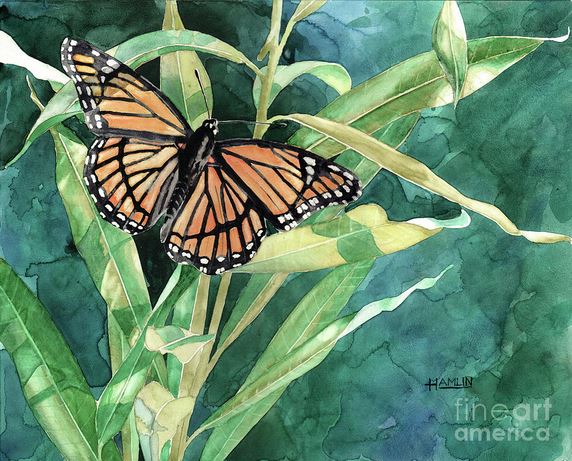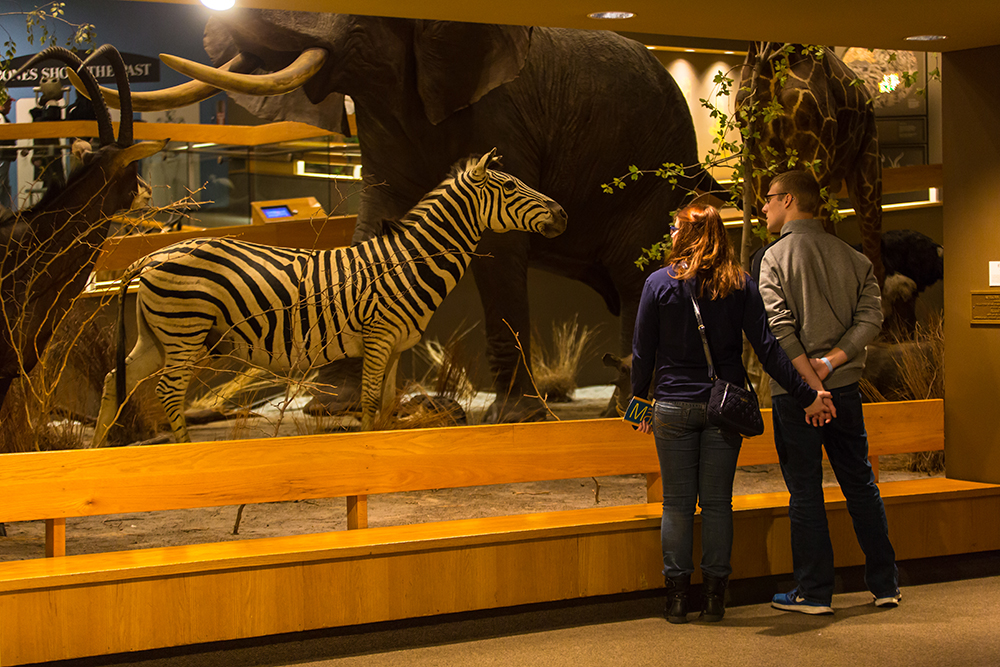
EARTH DAY FESTIVAL 2020: Butterflies Go Wing and Wing with Spring
April 22, 2020, is the 50th anniversary of Earth Day. Since 1970, Earth Day has increased awareness of the planet we share with a wonderfully diverse population of living organisms. Earth Day helps encourage people to protect the Earth and to learn more about preventing pollution and climate change, and help preserve endangered species and our ecological health. As one way to celebrate Earth Day, we want to share information about one of our favorite critters: frogs. Please also visit our Virtual Earth Day Event for a more activities and ideas about celebrating the home we share.
Spring is the time when Monarch butterflies (Danaus plexippus) begin to arrive in Massachusetts. In 1975 it was discovered that Monarch butterflies living in Massachusetts migrate south in the fall to mountains in central Mexico to escape the cold of the oncoming winter. These same butterflies return to the southern United States and begin breeding. In the spring the offspring of these southern Monarch butterflies and many successive generations will continue to migrate north to Massachusetts.
In Massachusetts successive generations of Monarchs feed and reproduce during the spring and summer and live two to five weeks. Only those Monarch butterflies born during the late summer make the trip south. End of summer Monarch butterflies will not reproduce and will migrate up to 3000 miles, further than any other butterfly species, and can live up to nine months. The longer life of Monarch butterflies as compared to a two week life span for most other butterfly species is attributed to Monarchs saving energy by not breeding and living at cooler temperatures which slows their metabolisms.
The bright colors of the Monarch butterfly are a warning to predators of its distasteful and toxic nature. Monarch butterflies gain this chemical protection during the larval stage when the caterpillars feed on milkweed plants and incorporating chemicals into their tissues.
Butterflies are classified in the Kingdom Animalia, in the phylum Arthropoda, in the Class Insecta. Like all arthropods, butterflies are cold blooded invertebrates which have a chitinous exoskeleton and segmented body parts. Like all insects, butterflies have three body segments; the head, thorax, and abdomen. From the head, insects have a pair of antennae and depending on life style complex mouth parts. Extending from the thorax are three pairs of legs and usually two pairs of wings, although some insects only have one pair of wings and a few are wingless. Insects usually have compound eyes and undergo simple or complete metamorphosis during their life cycle. Butterflies undergo complete metamorphosis and are considered to be evolutionarily advanced insects.
Butterflies and moths are insects classified into the order Lepidoptera. Lepidoptera is from Greek and translates to scales and wing. One of the defining characteristics of butterflies and moths is the presence of scales on their wings. Many entomologists consider butterflies to be moths which evolved to be active during the day. Unlike moths butterflies are brightly colored, have clubbed antennae, and hold their wings straight up above their bodies.
Butterflies have excellent color vision which extends into the ultraviolet range. Butterflies, like bees, can also detect polarized light. Polarized light are light waves moving in a single direction. The ability to detect light waves and their direction may provide butterflies with the ability to find the best food sources, navigate around their habitat, and migrate long distances. Over 100 different species of butterflies occur in Massachusetts and seven of them are listed as endangered.
Visitors to the Springfield Museums campus’ pollinator and rain gardens have the opportunity to see a variety of pollinator insects feeding from native plants. Insects to watch for include the Monarch Butterfly (Danaus plexippus), Rusty Patched Bumble Bee (Bombus affinis), and Honey Bee (Apis mellifera).
Dan Augustino is the Springfield Museums Aquarist. He is responsible for the safety, health, and comfort of our live animals here at the Museums.
Bibliography
Borror, Donald J. and Richard E. White. A Field Guide to the Insects America North of Mexico. Boston: Houghton Mifflin Company, 1970. (Peterson Field Guide Series).
Cech, Rich and Guy Tudor. Butterflies of the East Coast: An Observer’s Guide. Princeton: Princeton University Press, 2005.
Leahy, C.W., B. Cassie, and R. K. Walton (Eds). 2006. Massachusetts Butterfly Atlas 1986-1990. Massachusetts Audubon Society www.massaudubon.org/butterflyatlas.
Mass Audubon. 2013. “Massachusetts Butterfly Atlas.” Accessed 25 March. http://www.massaudubon.org/butterflyatlas
Myer, John. NC State University. 2009. “General Entomology Lepidoptera.” Last modified April 8. http://www.cals.ncsu.edu/course/ ent425/library/ compendium/lepidoptera.html
Natural History Museum. 2013. “Ornithoptera alexandrae (Queen Alexandra’s birdwing)” Accessed 26 March. http://www.nhm.ac.uk/nature-online/species-of-the-day/biodiversity/loss-of-habitat/ornithoptera-alexandrae/index.html



